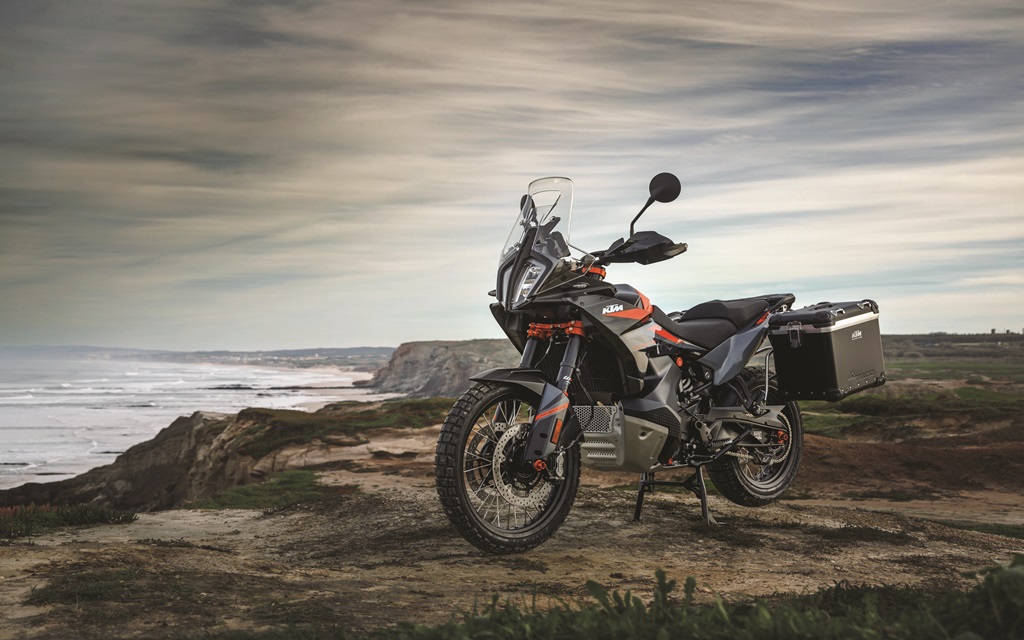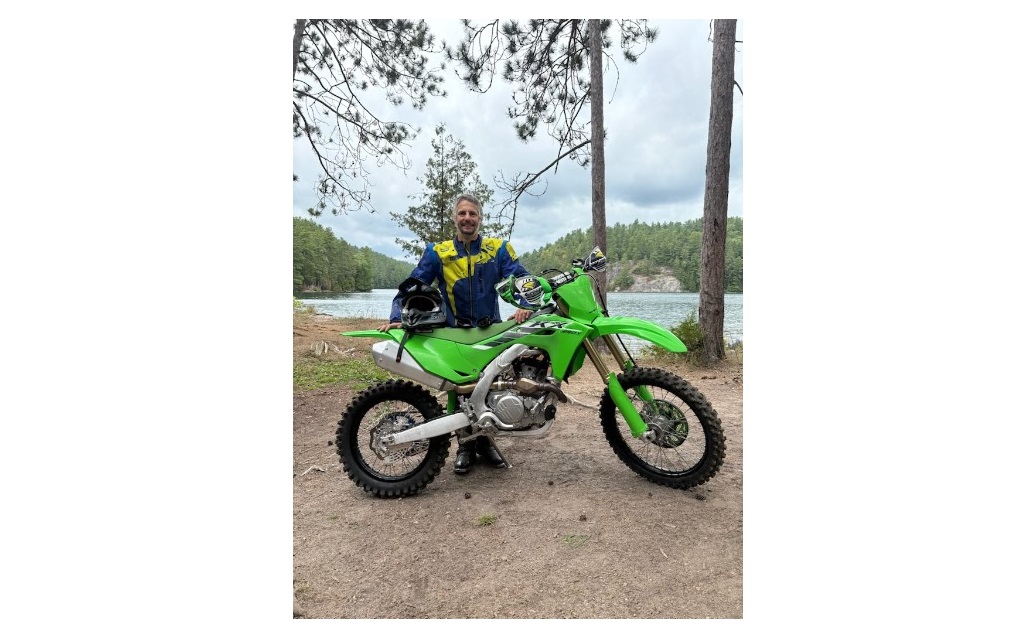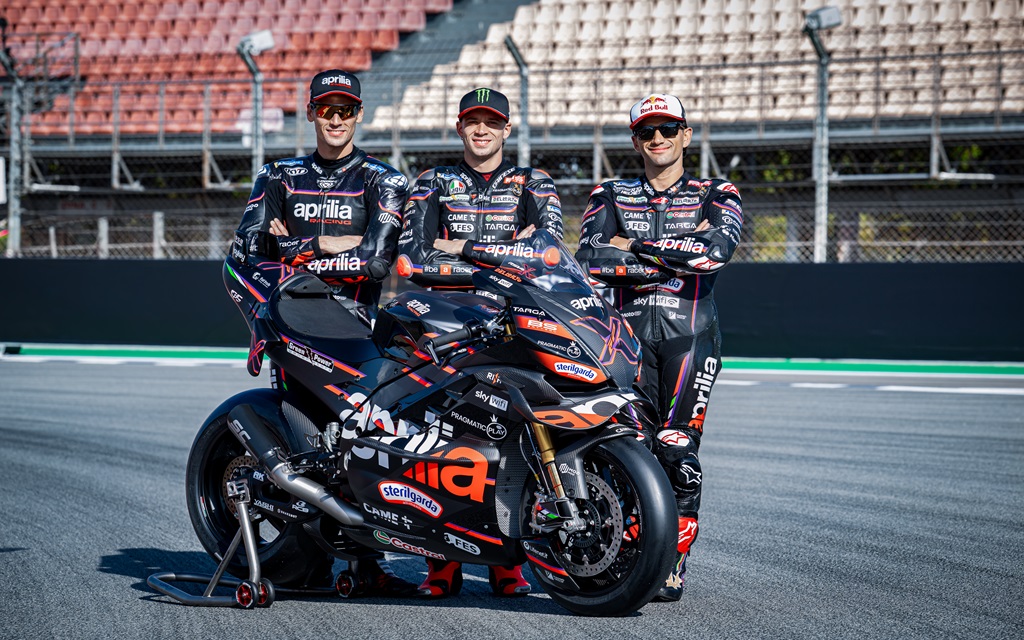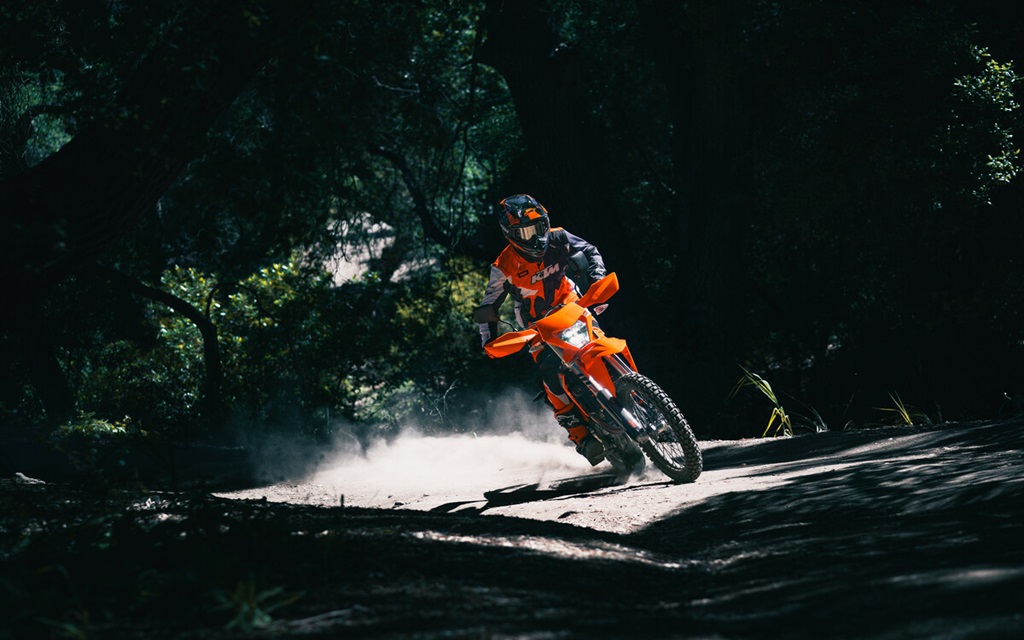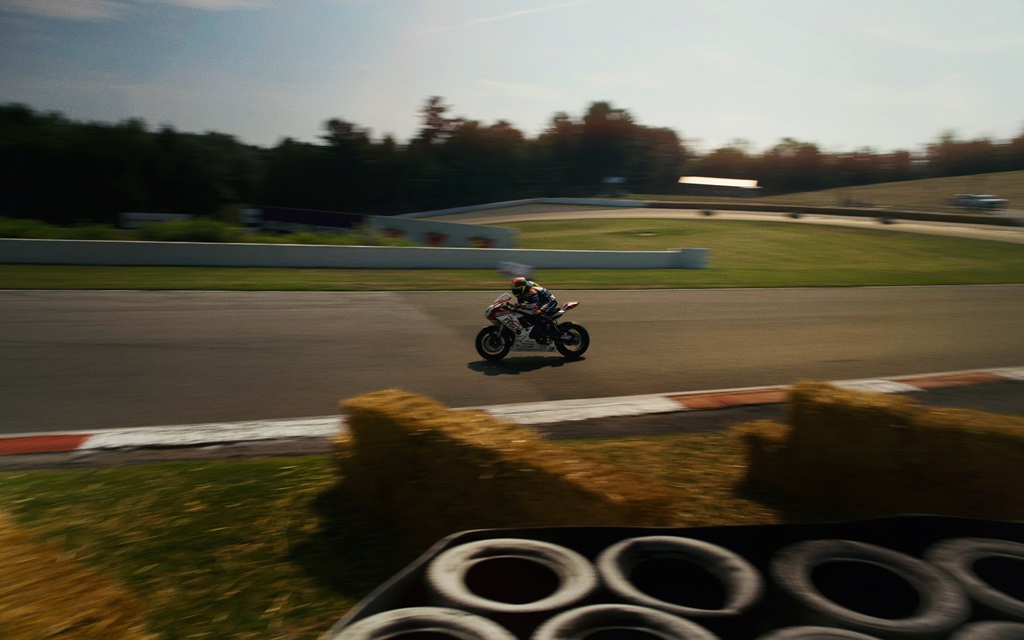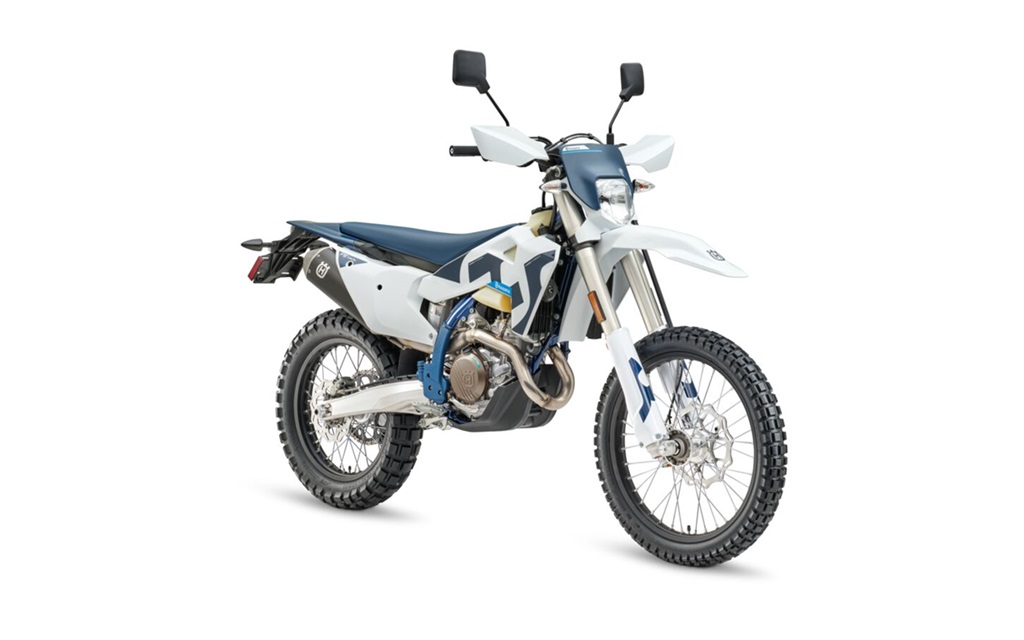Fierce competition makes the 2023 890 Adventure better.
Considering how rapidly and considerably things have changed in the middleweight ADV class, it isn’t really surprising to see KTM update its 890 Adventure a mere couple of years after its introduction. Indeed, aside from having to face BMW’s very good F-GSs, KTM witnessed enormous resources deployed by Triumph to turn the Tiger 900 into an impressive platform. Even Ducati got involved in 2022 with an extraordinarily well-executed DesertX and as if it all wasn’t enough, KTM’s own cousin brand, Husqvarna, also complicated things with an 890-derived Norden 901 that retained the Adventure’s main components, but elevated the end result with upgraded suspension and much better looks.
Óbidos, Portugal. The 2023 890 Adventure is KTM’s response to this ultra-fast evolution of the class. It is by no means a new generation of the model, but rather a revision specifically designed to keep the Austrian bike in the hunt. Since achieving that goal quickly was essential, KTM only addressed aspects of the 890 that really needed it. And so, the solid tubular steel frame, the compact and powerful 889 cc parallel twin, the balanced adventure ergonomics, the appropriate 21-inch front and 18-inch rear spoke wheels, the efficient chassis geometry and the innovative plastic fuel tank with lateral pods all remain intact.
As for changes, they’re so precisely targeted they show KTM knew exactly where the 2022’s weaknesses stood. Styling was an obvious one. The narrow front fairing floating high above a central section bloated by the wide gas tank gave the previous 890 the profile of a constipated praying mantis. Unsurprisingly, the 2023’s style gets tweaked, but only where needed to eliminate that weird look. The correction is simple : new side panels now join the sides of the fuel tank to a wider and reshaped front fairing. The new styling could be criticized as being too similar to KTM’s somewhat predictable ADV design language, but it would be very hard to argue the changes aren’t a legitimate improvement. Interesting fact: the new side panels are also functional as they allow room for a stronger front fairing structure more capable of supporting the weight of future accessories.
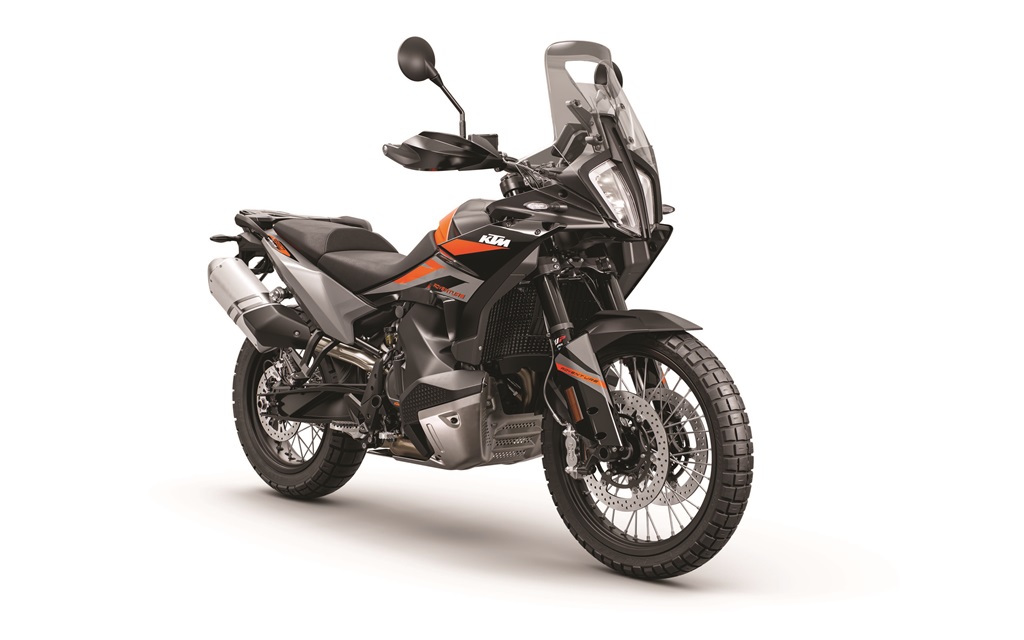
It would have been exaggerated, a few years ago, to include the previous 890 suspensions in the model’s list of weak points. But considering the ever more impressive capabilities of the KTM’s latest rivals, a suspension update had indeed become necessary. And so, for 2023, the previously unadjustable fork WP APEX with 43 mm tubes now gets compression and rebound damping adjustability. At the back, the same WP APEX shock is used, but the stock settings are updated. Front and back travel remains unchanged at 200 mm. Not quite transformative changes, but welcome nonetheless. Tires, on the other hand, are undeniably improved vs the previous road-biased rubber with the adoption of Pirelli’s excellent and truly dual purpose Scorpion Rally STRs.
The 2023 890 Adventure offers interesting improvements comfort-wise too. The previous seat, which was on the hard side and not really suited to longer rides, is replaced by wider and cushier one that’s still adjustable in high/low positions (860/840 mm). There’s also better wind protection thanks to a bigger windscreen with a more refined design that uses a rectangular opening and a new shape to all but eliminate buffeting.
Like most new motorcycles, the 2023 890 is equipped with a complete electronic rider aid suite displayed on a 5-inch color screen with built-in cell connectivity. An important note is necessary regarding these aids as they’re only fully active for the first 1500 km, then automatically switch back to a base set up. The idea is to let owners use that demo period to decide if they want to pay to reactivate all or some of the functions. If they chose not to pay, they’ll be stuck with a basic package that includes 3 ride modes (Street/Rain/Offroad), 2 ABS settings (Street/Offroad) and 2 traction control settings (On/Off). The optimized electronics option adds a Rally mode, a quickshifter, cruise control, 9 levels of traction control adjustability, rear wheel lock up control and throttle settings. About a thousand dollars is what it costs to reactivate every available fonction.
An invention of the auto side now creeping its way into the motorcycle world, the practice of remotely turning on or off various built-in functions — even charging a monthly fee to keep them active— is a new way of doing business when it comes to vehicle options. From the buyers’ point of view, frustration is common as the tactic is often perceived as a cheap trick to squeeze a few more bucks out of them. Paying for a new ride with present but deactivated technology isn’t a particularly attractive proposition either. On the contrary, manufacturers say : it’s all done in the buyer’s interest as it provides the latter with the opportunity to really try out complex technology before deciding if it’s worth the extra. Maybe, but the fact is building one bike instead of several differently optioned ones greatly simplifies production and inventory, meaning building a motorcycle that way is actually less expensive for manufacturers. Then, why wouldn’t a manufacturer just keep the savings, use this uniformization process to give its customers a better product, and leave it at that? The debate is only beginning.
Riders familiar with the 2022 890 Adventure will feel right at home on the 2023. The format is typical for the class: the 890 is considerably less cumbersome and heavy than large displacement ADVs, its seat is high without being excessively so and the riding position is exactly the stress-free and balanced posture expected from these bikes. In terms of obviously noticeable differences, the new seat immediately feels better, the refreshed information layout looks more up to date and the new fairing/bigger screen combo offers significantly better protection. That being said, while the new 890 does initially feel like little more than a slightly updated 2022, the more time I spent on it, the more I appreciated each improvement.
For example, the new seat remains comfortable even after several hours of riding —which couldn’t be said about the old one. At least, it’s the case on this test day during which we frequently leave paved roads and stand up on the pegs. We’re riding around in Portugal’s country side near Óbidos, about an hour north of Lisbon. I don’t know how many times I’ve ridden new bikes in this country at this point, and although it does feel like the decor looks similar from one visit to the next, the experience of riding here just doesn’t get old. December can get pretty cool in this part or Europe, but I’m wearing great gear so it’s all good. Actually, it’s not long before I warm up: our lead rider is constantly going back and forth between public roads and rough-ish trails and he’s not taking it slow. Keeping up with him is hard enough work I end up welcoming the fresh air. The Scorpions are as good as expected: solid and precise on pavement, on the one hand, and on the other, grippy enough off-road that there’s never a feeling of severely lacking traction. Several adventure models claiming serious off-road capabilities are now factory equipped with these tires, which is good news for buyers. But I’m also reassured when I see them on test bikes since normal road-biased rubber just wouldn’t allow for the type of riding necessary to draw any credible conclusions off road.
It rained heavily yesterday and although we do occasionally run into a bit of mud, we’re not getting bathed in it at all, which is a plus for me as I hate getting covered in the stuff. Another advantage from the damp ground: everyone is really appreciating how lucky we are to be riding off-road without breathing a spec of dust. Most of the trails we’re on wind their way through forest. The generally hard-packed ground is particularly challenging at a leisurely pace, but our guide doesn’t do leisure and instead rips pretty intensely through the woods. Being right behind him, I do my best to keep him in sight and not hold up the group. Had I been riding by myself, my natural pace would have been a bit slower, but we’re not entering an unsafe zone yet, so I choose to follow. The decision pays off with great information as our fast pace clearly exposes the 890 Adventure off-road capabilities. In a nutshell, in these conditions, it works really well and never forces me to adapt to some weird behavior. Standing on the pegs, everything is where it needs to be. The width and height of the handlebar, the position of the hands and feet levers, it all feels natural. If a precise move has to be made quickly, dealing with the 890’s dry weight of 200 kg is never problematic. It’s difficult to quantify the advantage in terms of handling and agility brought by the 890’s unique gas tank design, but for sure, locating a good portion of the fuel weight more or less at ankle level brings net benefits vs positioning it on top of the engine. As for the fork and shock, they impress not only with their ability to swallow every nasty hit our guide’s fast pace generates, but also with their planted and precise feel on winding back roads we’re also flying on. My only grip with the suspension is the slight harshness that’s always felt over small bumps when riding at normal speeds. The 890 doesn’t have the kind of suspension that floats magically over anything, but rather uses components that work very well when pushed hard on or off road, yet feel just a bit dry during normal everyday use.
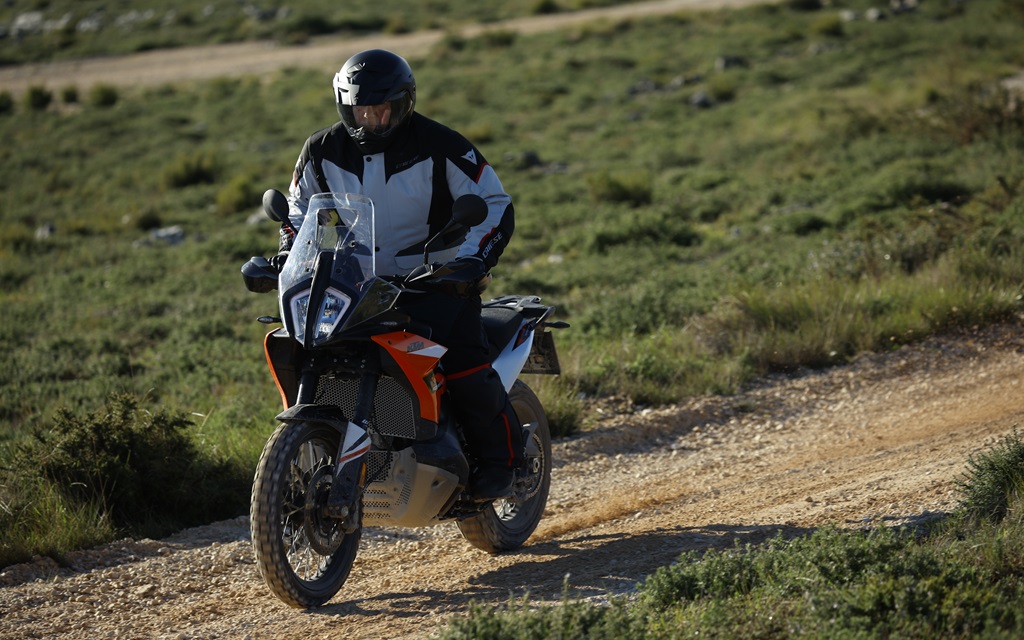
One of the features of the 890 Adventure I’m most impressed with is how well its various electronic rider aids work. Take ABS, for example. We’re tearing up a trail in the woods and I come up a bend so tight it catches me off guard. I jump on the brakes way too aggressively, but nothing bad happens. The 890 simply slows down, putting to good use its powerful brakes and a super effective ABS system. When the option is available, I like deactivating the rear ABS when riding off-road. But in this case, the pace is sometimes so quick I fear inadvertently locking the rear wheel at the wrong time, like that surprise tight turn. So I try to leave the system active at the back and soon realize that, like at the front, the ABS only engages when absolutely necessary, is very efficient and never feels awkward. I finally choose to activate ABS on both wheels when the pace is up there and only on the front wheel when things slow down a bit and I can have fun occasionally locking up the rear. With traction control, I end up with similar settings. Through the menus, the system can be turned up gradually from low to high intervention, or switched off entirely, in which case only the rider’s throttle hand determines rear wheel spin. Whatever the level it’s set at, TC acts exactly as expected without ever feeling strange or intrusive. But as well as TC works, it turns out KTM’s 105 hp parallel twin produces power so linearly and predictably that controlling rear wheel spin by myself in the dirt is a ton of fun. And so I choose to leave TC turned off in trails, but reactivate it the instant we get back on pavement: with portions of our street itinerary being damp, with dirty tires that just came out of a trail and with a lead rider who’s as much in a hurry on than off road, I most definitely welcome the assist of traction control on tarmac.
Another interesting aspect of the 890’s electronic functions package is that it doesn’t make me constantly swear at it, which is unusual. The main reason is KTM set it up with shortcuts allowing the rider to switch between a few functions without the need to get into menus. I choose to establish those functions as two modes I specifically set up for road and dirt. Then, only using a couple of buttons on the left-hand control switch, I go back and forth between them as often and quickly as we alternate between street and trail. Bravo for that.
I was a little annoyed by the slight lack of refinement displayed by the 890 Adventure’s suspension in normal use; it is, after all, the conditions in which it’ll likely spend most of its time. But the more I think about it and the more I realize it’s a case of everything else working so well and transparently that a slight imperfection gets amplified. I have to say I’m also bugged by the idea of building a motorcycle with certain functions but then asking buyers for more cash to activate them. These adventure bikes have recently considerably gone up in price and it seems to me manufacturers shouldn’t completely succumb to greed: just activate the damn functions. But let’s see how buyers see it and if all brands follow suit or not. Other than these pet peeves, it’s difficult for me to dislike much about this revised 890 Adventure. I never appreciated the looks of the 2022 with its small head awkwardly floating above a disproportionally wide belly. The 2023 is completely fixed in that regard. The 2022 also deserved a few harsh words because of its uncomfortable seat, simplistic suspension and basic rider aids. The 2023 addresses all these issues. Finally, at a bit over 15 grand ($15 299 without the aforementioned electronic options) in a class where MSRPs approaching $20 000 aren’t rare anymore, the 890 Adventure is quite reasonably priced. It’s not the category’s most spectacular or revolutionary choice, but it makes up for it with true adventure capability at a fair cost.
